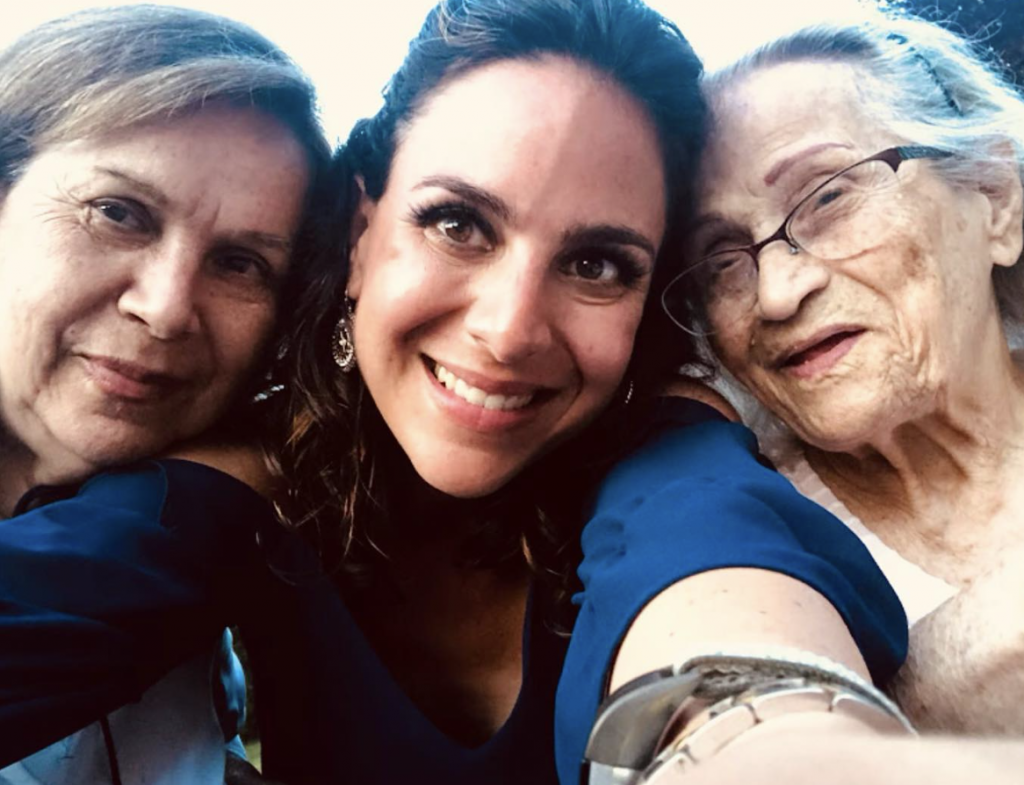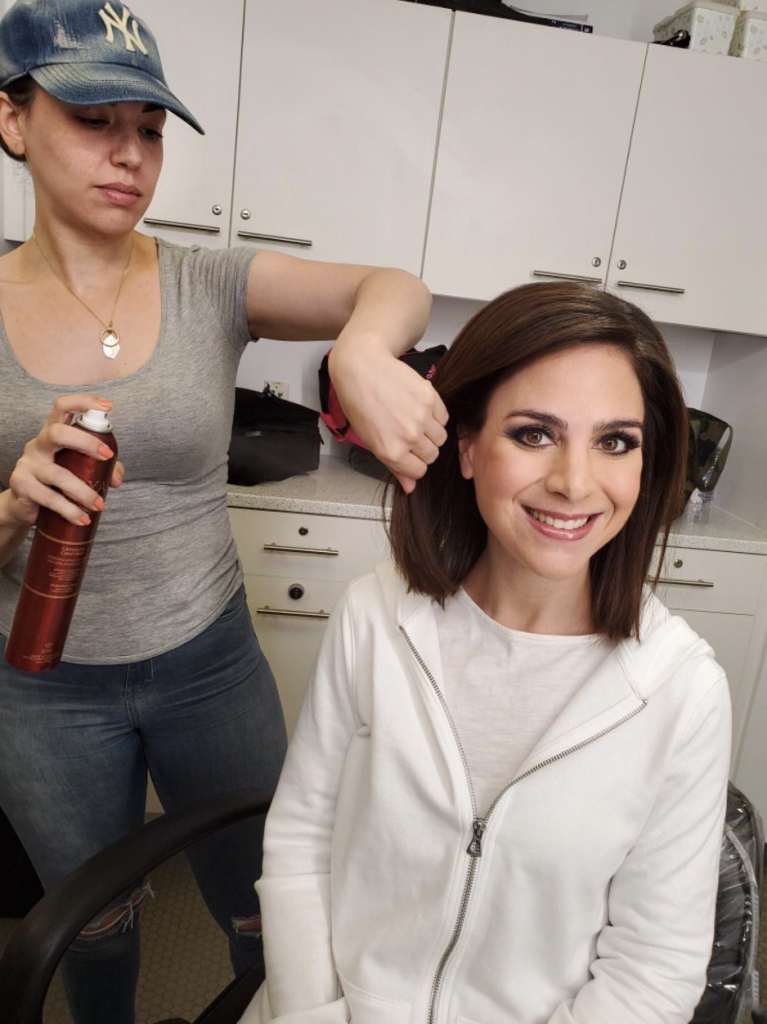First Annual Mammogram Caught Reporter's Early Stage Breast Cancer
- Jackie DeAngelis, a co-host of “The Big Money Show” on Fox Business was diagnosed with stage 1 breast cancer after her first annual mammogram when she was 40.
- The medical community has a broad consensus that women have annual mammograms between the ages of 45 and 54.
- An independent panel of experts called the U.S. Preventive Services Task Force (USPSTF) says that women should start getting mammograms every other year at the age of 40, suggesting that this lowered the age for breast cancer screening could save 19% more lives.
- For women aged 55 and older, the American Cancer Society recommends getting a mammogram every other year. However, women in this age group who want added reassurance can still get annual mammograms.
DeAngelis, now 43, was not worried. It was just a routine check-up. The Fox Business “The Big Money Show” co-host says she has always been on top of those types of things.

Mammograms Are Still the Best Tool for Detecting Breast Cancer
Assessing Her Options
DeAngelis was diagnosed with Stage 1 breast cancer. Her prognosis was very good, according to her doctors and she had two options. The first would be a lumpectomy, a surgery that would remove only the cancerous area, followed by radiation, some chemotherapy and monitoring every six months. The second option would be a mastectomy, meaning they would remove the entire breast.
“I was with my mother at that appointment. She’s my confidant, she was my champion through this, and we just looked at each other. It was a no-brainer that we would remove the breast.”

DeAngelis, who speaks Mandarin and Farsi fluently, who went to law school while working full-time in her early 20s, and who was stationed in the Middle East while working at CNBC, knows how to power through a life obstacle. She took on this new challenge in a similar fashion, going back to work at Fox just 13 days after her double mastectomy. Though, the experience had a bigger impact emotionally than she expected.
“I felt like I had had a body part amputated. And then when I started to really delve into those feelings, the emotion of not only is it a body part, it’s part of your womanhood and how you feel about yourself and the reproductive cycle. Just so many different issues.”
Navigating New Physical Challenges
She also faced a lot of physical limitations from her reconstruction, which caused chronic pain and tightness and stopped her from being active. This was another challenge she did not expect but thought it was just something she was going to have to accept – her new normal.
“There was a part of me that thought, ‘They saved you. They got the cancer out of your body. Maybe this is just how it’s going to be and maybe you just have to live with that.’”

She tried physical therapy, which did not work for her. So she talked to her surgeon and plastic surgeon about additional options. Her doctors told her the only way to correct it would be an additional surgery, an idea that DeAngelis was not up for mentally.
“I would just roll my eyes and say, ‘I can’t.’ The thought of going to the hospital, going under anesthesia, having to do another surgery. It was unfathomable, basically.”
It took her a year and a half to feel like she was in the right place to move forward with the third surgery. And despite the rollercoaster of emotions, she now knows it was the right decision.
“I walked out of that surgery, even having been out under anesthesia and I immediately knew there was an improvement. I immediately knew that things were going to be better and they have been.”
Her Advice For Others
After all she went through, DeAngelis is still surprised to hear that many of her friends and family do not do their annual mammograms.
“I say, ‘Have you gotten your mammogram yet?’ And the answer is ‘No.’ And I ask them ‘Why?’ They’re busy. They don’t really think that they need it. They feel like they’re too young. My message to people is screening is such a huge part of fighting cancer and you never know if it’s going to be you.”

While she still contemplates whether that six-month delay in her initial annual mammogram could have changed something, she is overwhelmingly grateful that her cancer was caught when it was, especially given she had no symptoms.
“My treatment certainly wasn’t a picnic, but it could have been much worse if this wasn’t caught and we found it two or three years down the line,” DeAngelis reflects. “So that’s just the most important thing for me. When your doctor tells you it’s time to go get a mammogram, go.”
The Importance of Breast Cancer Screening
Screening for breast cancer is normally done through a mammogram, which looks for lumps in the breast tissue and signs of cancer.
While there is some disagreement about the exact age a woman should start getting mammograms, new national guidelines, and many doctors, now recommend that women get annual screening start at the age of 40. Women with a family history of cancer, or at high risk, should consult their doctor and likely get screened earlier.
The American Cancer Society (ACS) suggests that women should begin annual mammogram screenings for breast cancer at age 45 if they are at average risk for breast cancer.
The ACS also advises:
- Women aged 40-44 have the option to start screening with a mammogram every year.
- Women aged 55 and older can switch to a mammogram every other year.
- Women aged 55 and older could also choose to continue yearly mammograms.
- For screening purposes, a woman is considered to be at average risk if she doesn’t have a personal history of breast cancer, a strong family history of breast cancer, a genetic mutation known to increase risk of breast cancer, such as a BRCA gene mutation or a medical history including chest radiation therapy before the age of 30.
Experiencing menstruation at an early age (before 12) or having dense breasts can also put you into a high-risk category. If you are at a higher risk for developing breast cancer, you should begin screening earlier.
Below are common symptoms to look out for:
- New lump in the breast or underarm (armpit)
- Any change in the size or the shape of the breast
- Swelling on all or part of the breast
- Skin dimpling or peeling
- Breast or nipple pain
- Nipple turning inward
- Redness or scaliness of breast or nipple skin
- Nipple discharge (not associated with breastfeeding)
Questions To Ask Your Doctor
- When should I start getting mammograms annually?
- How should women with dense breasts approach early stage breast cancer/mammograms?
- What are my options if diagnosed with early stage breast cancer?
- What added testing is available for women with a history of cancer or who are at higher risk of getting breast cancer to supplement regular screenings?
Learn more about SurvivorNet's rigorous medical review process.

